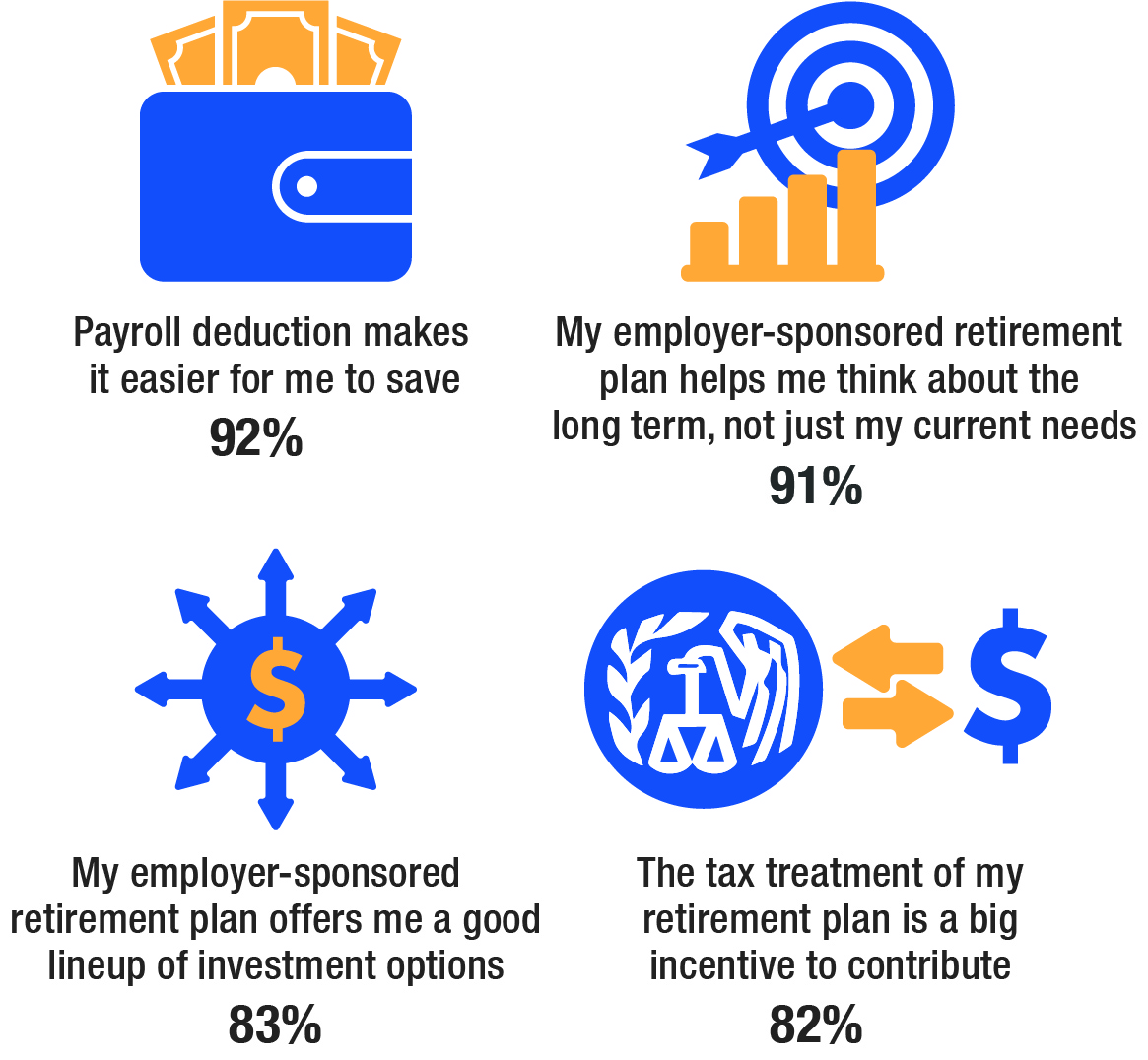08 Sep Managing Your Workplace Retirement Plans
 About 80 million Americans actively participate in employer-sponsored defined contribution plans such as 401(k), 403(b), and 457(b) plans.1 If you are among this group, you’ve taken a big step on the road to retirement, but as with any investment, it’s important that you understand your plan and what it can do for you. Here are a few ways to make the most of this workplace benefit.
About 80 million Americans actively participate in employer-sponsored defined contribution plans such as 401(k), 403(b), and 457(b) plans.1 If you are among this group, you’ve taken a big step on the road to retirement, but as with any investment, it’s important that you understand your plan and what it can do for you. Here are a few ways to make the most of this workplace benefit.
Take the free money. Many companies match a percentage of employee contributions, so at a minimum you may want to save enough to receive a full company match and any available profit sharing. Some workplace plans have a vesting policy, requiring that workers be employed by the company for a certain period of time before they can keep the matching funds. Even if you meet the basic vesting period, funds contributed by your employer during a given year might not be vested unless you work until the end of that year. Be sure you understand these rules if you decide to leave your current employer.
Reasons to Contribute
Percentage of households with assets in defined contribution plans who agreed with the following statements

Source: Investment Company Institute, 2018
Bump up your contributions. Saving at least 10% to 15% of your salary for retirement (including any matching funds) is a typical guideline, but your personal target could be more or less depending on your income and expenses. A traditional employer-sponsored plan lets you defer income taxes on the money you save for retirement, which could enable you to save more. In 2020, the maximum employee contribution to a 401(k), 403(b), or 457(b) plan is $19,500 ($26,000 for those age 50 and older).2 Some plans offer an automatic escalation feature that increases contributions by 1% each year, up to a certain percentage.
Rebalance periodically. Your asset allocation — the percentage of your portfolio dedicated to certain types of investments — should generally be based on your risk tolerance and your planned retirement timeline. But the allocation of your investments can drift over time due to market performance. Rebalancing (selling some investments to buy others) returns a portfolio to its original risk profile and does not incur a tax liability when done inside a retirement plan. Consider reviewing your portfolio at least annually. Some workplace plans offer automatic rebalancing.
Know your investments. Examine your investment options and choose according to your personal situation and preferences; some employer-sponsored plans may automatically set up new employees in default investments. Many plans have a limited number of options that may not suit all of your needs and objectives, so you might want to invest additional funds outside of your workplace plan. If you do, consider the risk and overall balance of your portfolio, including investments inside and outside your plan.
Keep your portfolio working. Some employer plans allow you to borrow from your account. It is generally not wise to use this option, but if you must do so, try to pay back your loan as soon as possible in order to give your investments the potential to grow. Plans typically have a five-year maximum repayment period.
All investments are subject to market fluctuation, risk, and loss of principal. When sold, investments may be worth more or less than their original cost. Asset allocation is a method used to help manage investment risk; it does not guarantee a profit or protect against investment loss. Distributions from employer-sponsored retirement plans are generally taxed as ordinary income. Withdrawals prior to age 59½ may be subject to a 10% federal income tax penalty.
1) American Benefits Council, 2019
2) Employer contributions are not included in these annual employee limits for 401(k) and 403(b) plans. Employers typically do not contribute to 457(b) plans, but any such contributions will count toward the employee limit. There may be additional catch-up contribution opportunities for 403(b) and 457(b) plans.
